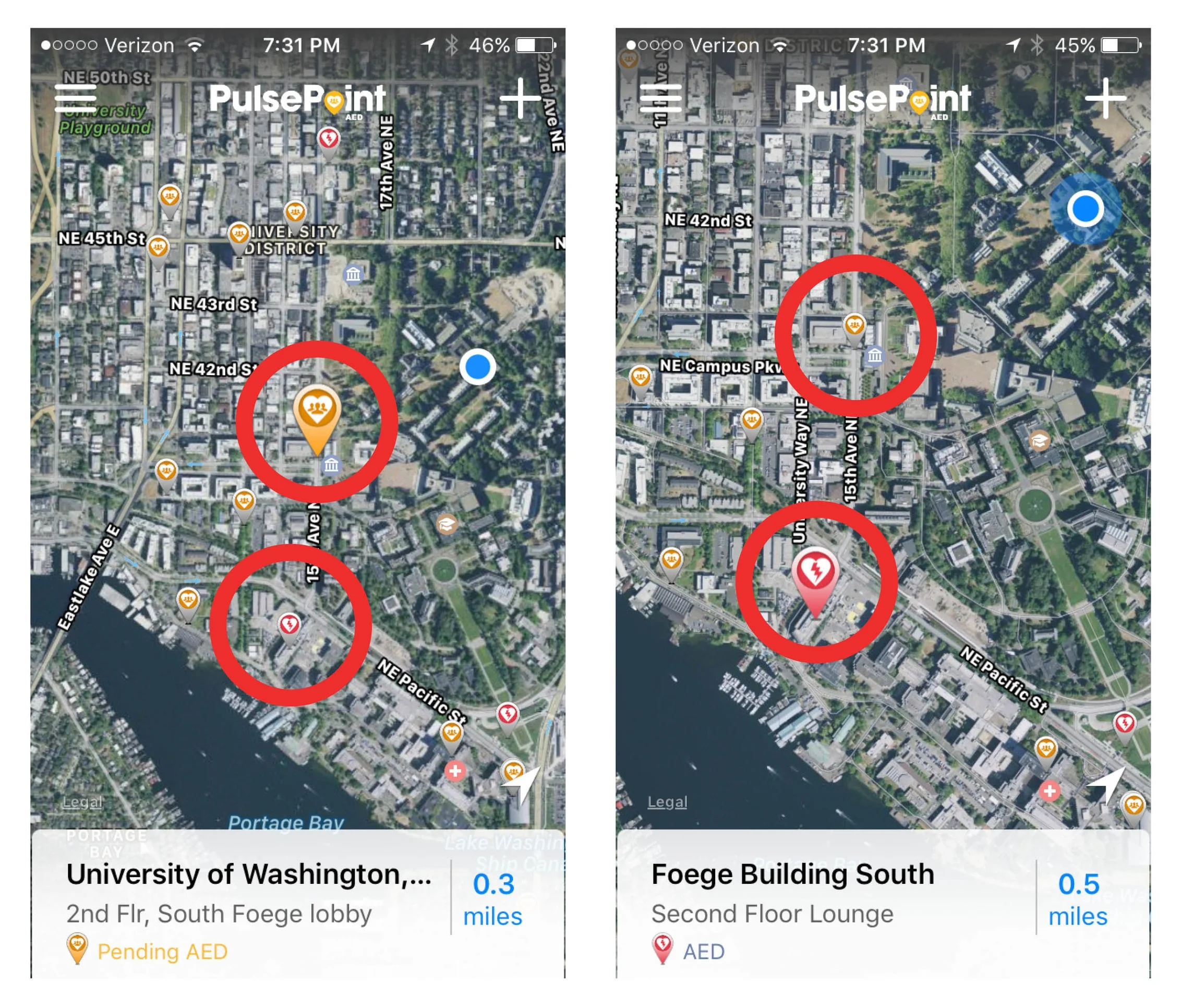Physio-Control AED
Design a new automatic external defibrillator for physio-control
RESEARCH
For victims of sudden cardiac arrest, every second can be the difference between life and death. For every minute a victim goes without treatment by defibrillation, their chance of survival decreases by 10% per minute after three minutes. Of the 32% of out-of-hospital sudden cardiac arrest victims that do receive CPR, only 2% are treated with an AED.
INSTRUCTOR: Sang-gyeun Ahn
SPONSOR: Physio-Control
DURATION: 10 weeks
CHAIN OF SURVIVAL
The chain of survival, the life-saving actions to take during cardiac arrest, revealed several opportunities to incorporate the Automatic External Defibrillator into the chain of survival at an earlier stage. I focused on the stage of finding the AED as well as the ease and confidence of use.
PULSEPOINT
I found PulsePoint and PulsePoint AED, which coincidentally turned out to be powered by Physio-Control. In tandem, these apps do two things. First, they crowdsource and map information on the location of AEDs. Second, they connect emergency dispatch with citizens trained in CPR who may be able to get to the scene before emergency vehicles, possibly saving lives. This gave the starting point for my AED design.
Screenshots of PulsePoint AED. Red circles denote faulty information. Note both locations are labeled as Foege Building.
CONVERGENCe
PulsePoint supplements the usual 911 call by calling upon good samaritans to do CPR on victims before an ambulance may reach them. There is an opportunity to further supplement the process by automating the arrival of a nearby AED through the app as well.
FORM EXPLORATIONS
AN AED DESIGNED FOR PULSEPOINT & RUNNERS
The PulsePoint AED includes a GPS tracker which auto-updates the PulsePoint AED app with location and battery status, for ensured reliability.
The large handle is easy to grab and carry in a hurry.
The built-in strap and protective bumpers eliminate the need for the superfluous, time-consuming soft-goods carry bags.
The angled handle enables strong, comfortable grip while running.
Exterior speaker allows for audio alarm to alert the approaching user of the location of the AED.
Exterior lights allow for visual alarm to alert the approaching user of the location of the AED.
The same way the PulsePoint app sends notifications to users near a victim in need of CPR, the AED sends notifications to app users near an AED that is close to a victim in need of treatment. The user sees the location of the AED on the app's map and runs to the AED. The external speaker and lights on the AED are remotely activated by emergency dispatch. When the alarms go off, people near the AED are alerted that someone will be coming for it, and the user fetching the AED can easily identify its location. The alarm continues as the runner is en route, alerting nearby civilians that there is an emergency and to make way.
The CPR administer, the AED, and the ambulance all independently converge on the sudden cardiac arrest victim for the fastest treatment.
The AED stores accessories (for scissors and a razor for removing hair, extra pads, etc.) and standard Physio-Control pads. It features a hard plastic case (transparent to familiarize potential users with the contents of the AED before an emergency situation even occurs).




